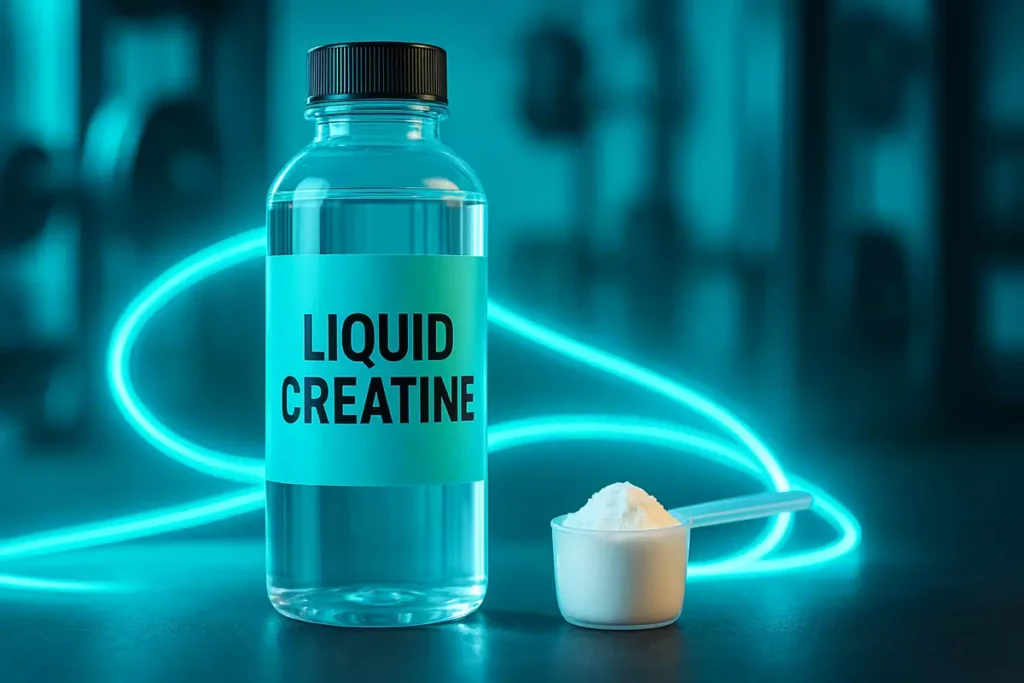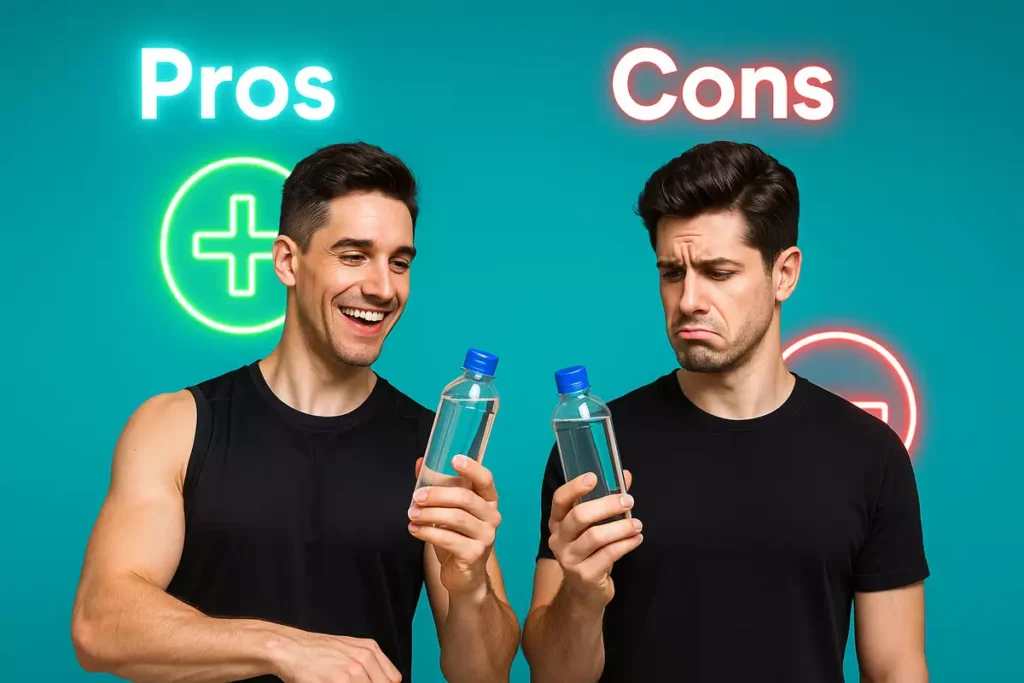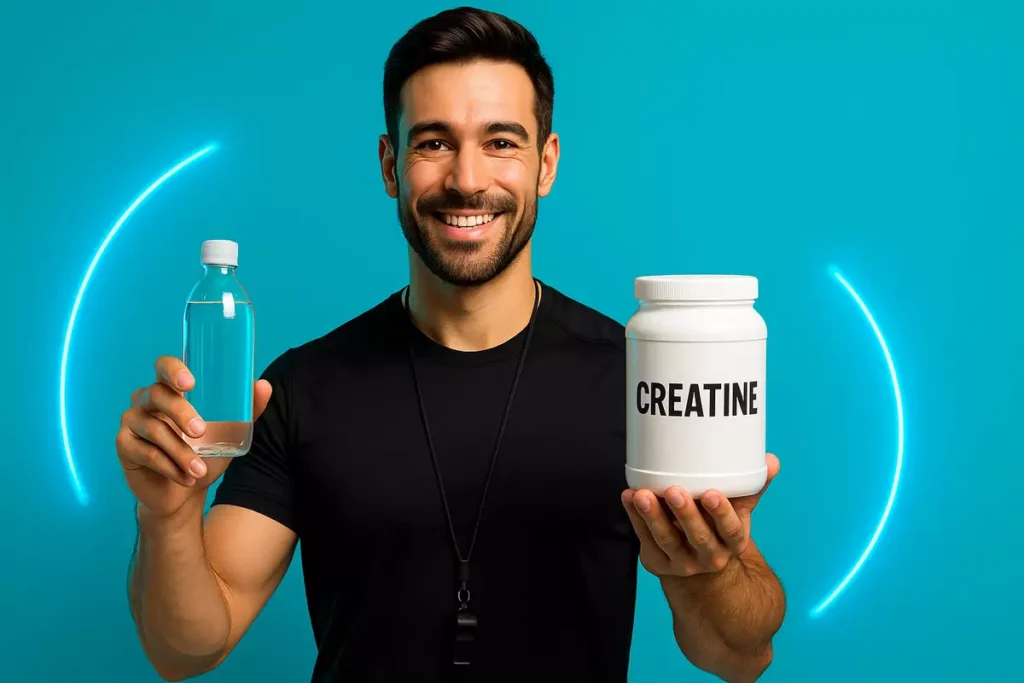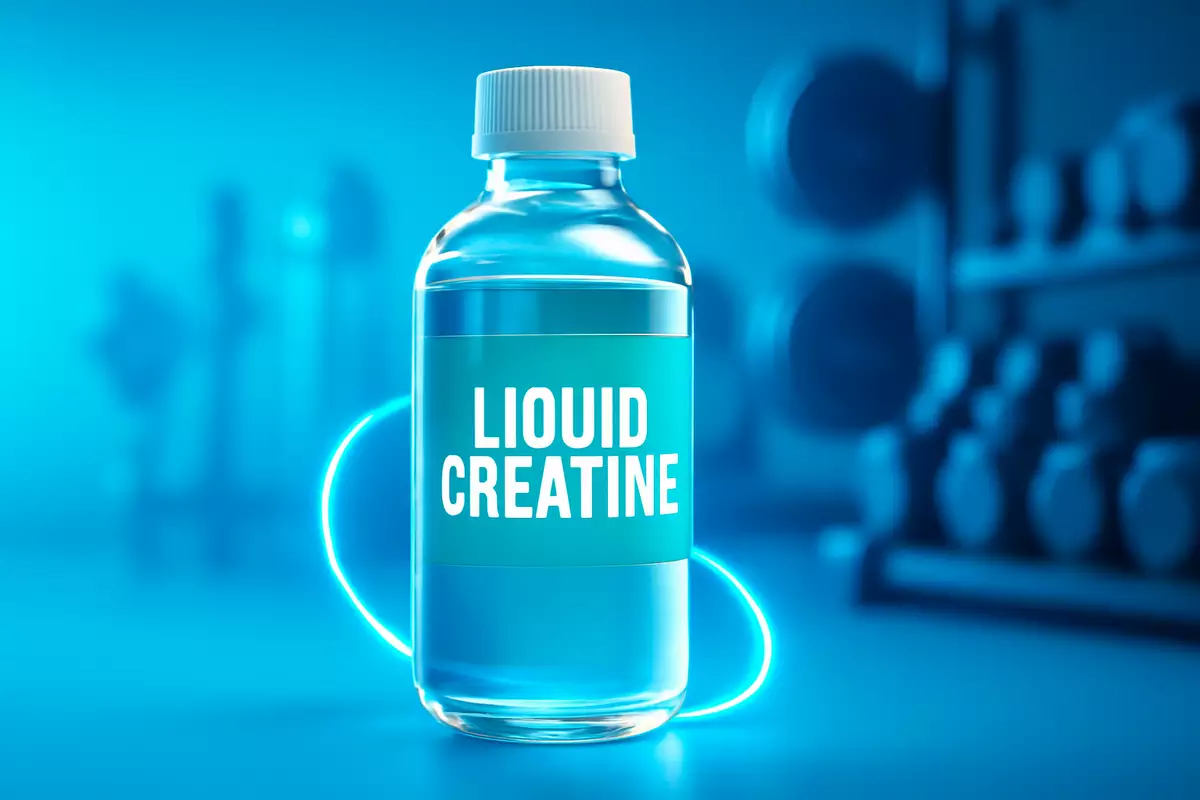Creatine is one of the most trusted supplements for strength and muscle growth. But what about liquid creatine—does it really work?
Many brands claim their liquid version is faster, easier, and just as powerful. But science and real-world results tell a very different story.
Before you spend extra money on flashy bottles, let’s break down if liquid creatine actually delivers or if powder is still the smarter choice.
Table of contents
Are Liquid Creatine Supplements Effective?
Here’s the truth upfront: liquid creatine supplements are less effective than traditional creatine monohydrate powders.
The main reason is stability. When creatine sits in liquid for too long, it quickly breaks down into creatinine, a waste product your body can’t use for strength or performance.
So while they might look convenient, most lifters won’t see the same benefits as they would with a simple, inexpensive creatine monohydrate.
What Is Liquid Creatine?

Liquid creatine is marketed as a ready-to-drink or pre-mixed form of creatine. Companies promote it as faster, easier, and more convenient than mixing powders.
On paper, it sounds appealing—you just grab a bottle and go.
But when you understand how creatine works, you realize the problem: creatine doesn’t stay stable in water for long. That’s why powders remain the superior choice.
The Science of Creatine Stability
Creatine monohydrate, the gold standard form, is highly stable as a dry powder.
But once dissolved in liquid, especially if it sits for hours or days, it starts degrading into creatinine.
This means that many liquid creatine products lose potency before you even drink them. That’s likely why athletes often don’t feel the same performance edge compared to powders.
For athletes competing in sports, it’s also important to understand how creatine shows up in banned substance testing. While creatine itself is not banned, many poorly formulated supplements raise red flags.
Pros and Cons of Liquid Creatine

✅ Pros:
- Convenient and ready-to-drink
- No need for mixing or measuring
- Some people find the taste better than powder
❌ Cons:
- Lower effectiveness due to instability
- More expensive than creatine powder
- Limited research supporting benefits compared to monohydrate
Best Alternatives to Liquid Creatine
The gold standard is still creatine monohydrate—cheap, reliable, and backed by decades of research.
Many athletes also prefer micronized creatine monohydrate, which dissolves more easily in water and reduces stomach discomfort.
Another alternative is creatine HCL, which some lifters find easier on digestion. For those who want to explore, you can check out comparisons like creatine ethyl ester vs. monohydrate and reviews of the best creatine types for rapid muscle recovery.
And if you’ve ever struggled with side effects, I recommend learning how to prevent bloating and cramps from creatine monohydrate.
Trainer’s Recommendation

As a trainer who has tested both, my advice is simple: stick with creatine powder.
I’ve personally tried liquid creatine several times, and I never felt the same boost in strength or recovery that I consistently get from monohydrate powder.
One of my clients, Daniel from Germany, tried liquid creatine for a month. He was frustrated because his strength plateaued, while his training partner using monohydrate was steadily progressing.
Another client, Maria from Spain, switched back to powder after stomach issues with liquid creatine.
My own experience matches theirs. With liquid creatine, my workouts felt the same as if I wasn’t supplementing at all. But when I switched back to powder, I noticed my usual improvements in recovery and strength output.
A real-world example that sticks with me is James from the UK. When he joined my program, he was taking a liquid creatine product. He felt disappointed with the lack of progress.
After I encouraged him to switch to monohydrate, his squat increased by 15 kg within six weeks, and he felt more energized after training. That’s the power of sticking with what works.
For some lifters, combining creatine with other supplements can make sense. I’ve seen positive results when pairing EAAs and creatine as a pre-workout combo. But for creatine itself, powders are still the clear winner.
Final Takeaway:
Liquid creatine might look modern and convenient, but when it comes to building strength, recovering faster, and getting real results, it just doesn’t deliver like creatine monohydrate powder.
Save your money, stick with the proven option, and fuel your training with something that truly works.



Leave a Reply